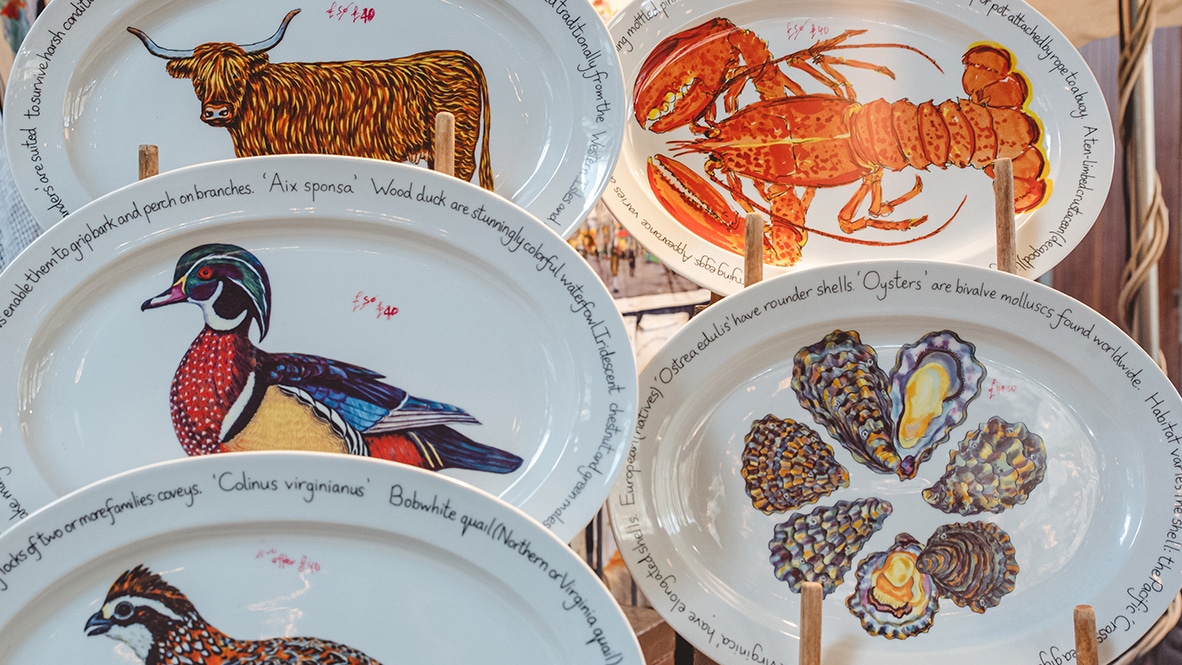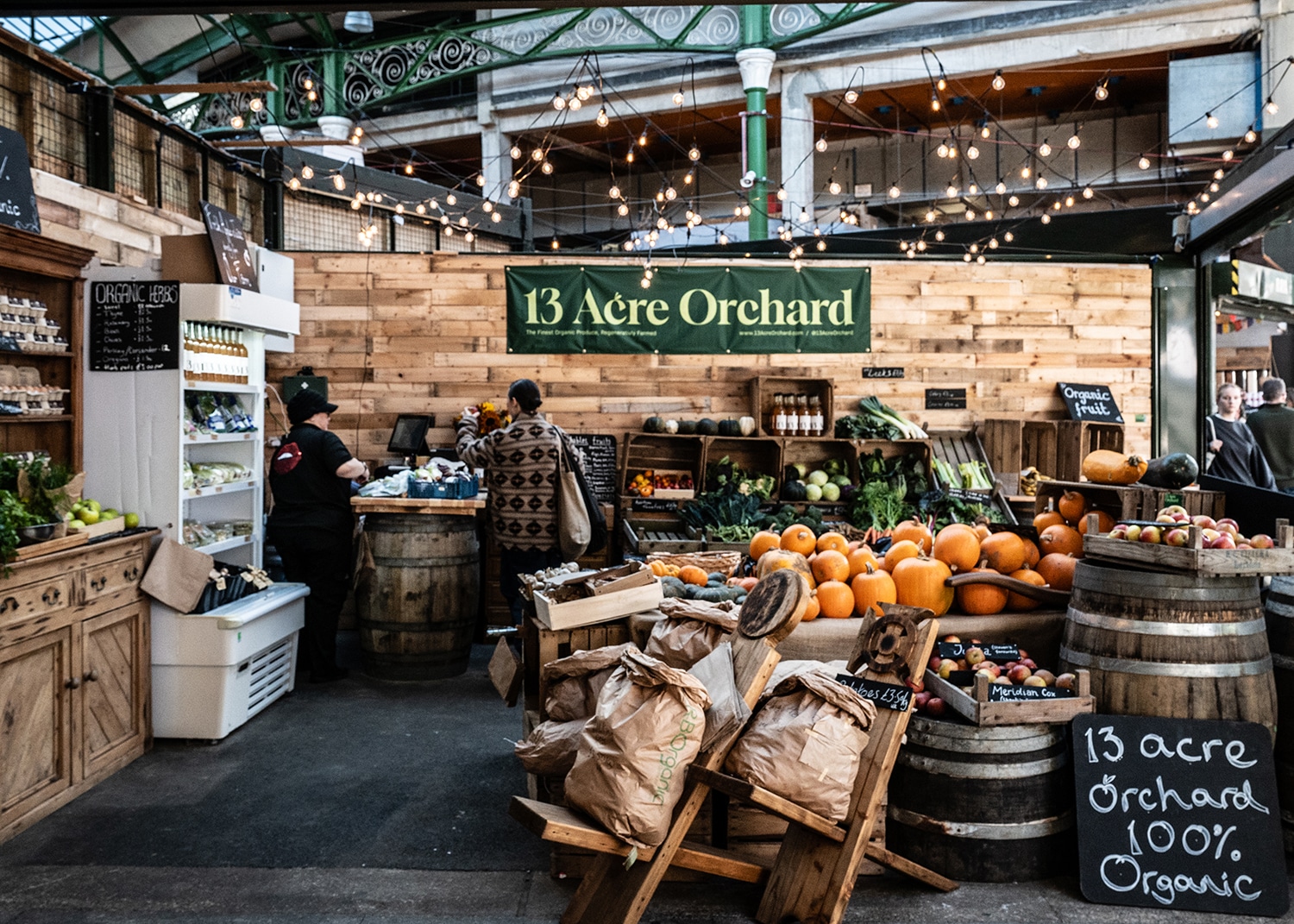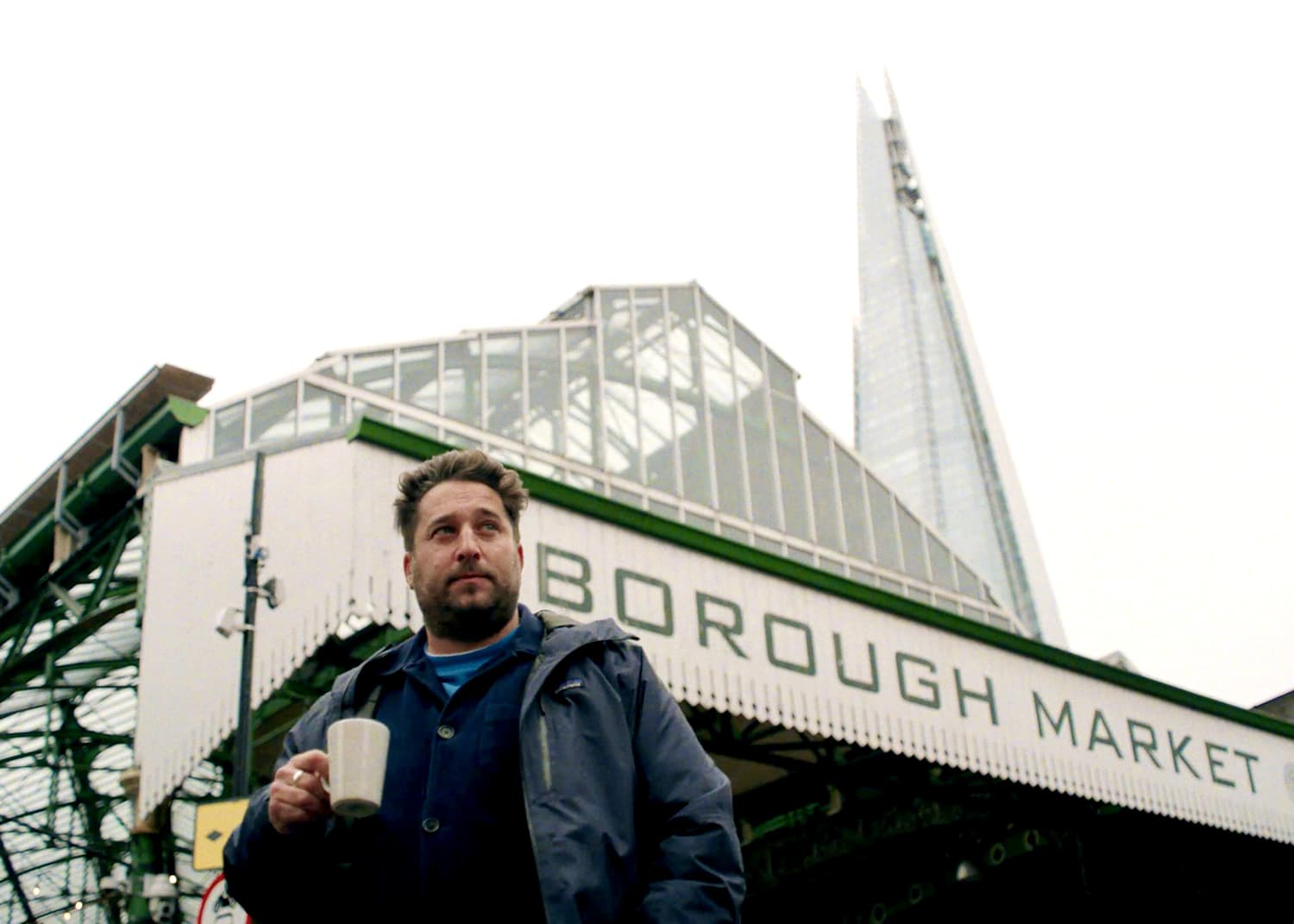Q&A: Harold McGee
Food science writer Harold McGee on curious cooks, horrifying novelties and why there are no easy solutions to the problems caused by food production
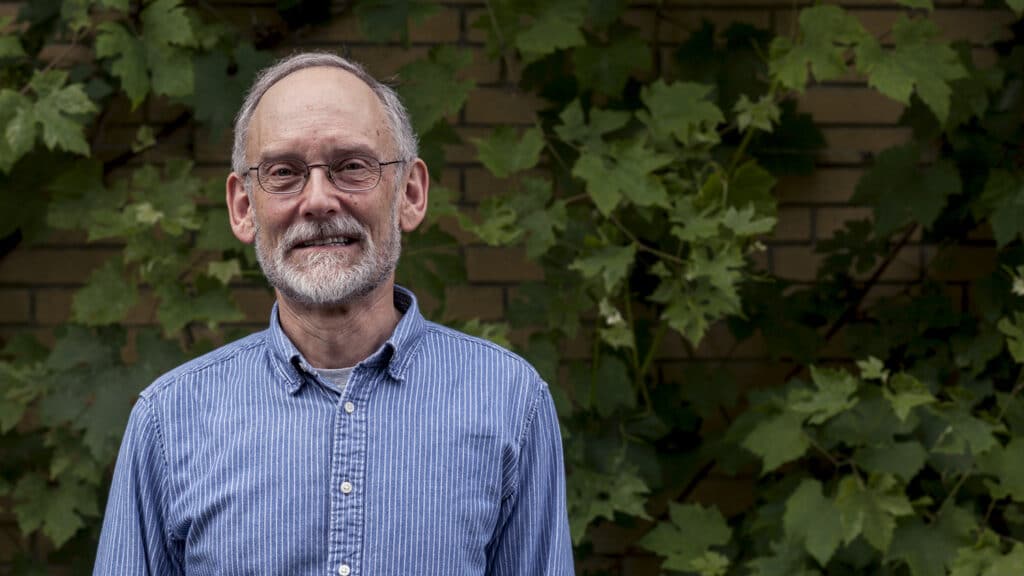

“HESTON BLUMENTHAL’S MIND WAS BLOWN BY THE FACT THAT CLASSIC FRENCH TECHNIQUES WERE NOT GROUNDED IN TRUTH”
Interview: Ellie Costigan / Images: Anna Warnow
Harold McGee is a highly influential American author who writes mainly about the science of food and cooking. His seminal book, On Food and Cooking – a hefty, encyclopaedic compendium of “the science and lore of the kitchen” for the everyday cook – was first published in 1984. A significantly expanded and revised version, which was published in 2004, influenced a move towards a form of high end cookery grounded in food science, championed by the likes of Heston Blumenthal, Ferran Adria and Thomas Keller. Harold wrote a column, A Curious Cook, in the New York Times for five years. He is now a visiting lecturer at Harvard University and trustee of the Oxford Symposium on Food and Cookery.
When did you first develop a fascination with the science of food?
It was in the mid-1970s. At the time I was a graduate student in literature, writing a dissertation on John Keats and also teaching at the university, but it was clear already then that a teaching career was probably not going to materialise. I think it’s perpetually the case that more people want to teach literature than there are classes to teach. I tried for a few years to get a full time job and didn’t, so began to cast around for other possibilities. I had been, as an undergraduate, a science major and my mentors in literature said, “You know, that really distinguishes you, you ought to do something with that,” and so I began to think about it.
I had a friend who was a biochemist who, for fun, taught a one-off afternoon course on the thermodynamics of crystal formation, as applied to fudge making. It was a huge success. Everyone was able to eat their experiments and something about that resonated with me. I had other friends who enjoyed getting together to cook and eat food and drink inexpensive wine. At one of those dinners, a friend of mine had his wine glass knocked over. The tablecloth was white and someone said, “Throw salt on the stain. That’ll take care of it.” I thought, that’s interesting, I wonder why that is? The same friend who had his wine glass knocked over asked the group why it is that human beings have a limited tolerance for beans, why after a certain point they begin to give you… uncomfortable feelings. I thought, I wonder if there’s an answer to that question? I went to the science and agriculture section of the library and that’s where I discovered food science. I spent hours there. I found the answer to his question, and that’s what gave me the idea that writing about the science of food and cooking – not for professionals, but for people who are just interested – would be a project that I could do that no one else seemed to have done at the time. That’s what sparked On Food and Cooking.
Did you do much practical testing in the kitchen while writing the book?
I felt obliged to test out everything that I could test. Food science has for its whole history been involved mainly with industry, not with cooking, so many of the books ignored a lot of issues that are important to cooks. I had to extrapolate from the food science literature and try to interpret it to make sense of what happens in the kitchen. For those areas especially, I would spend time in the kitchen, making sure that I wasn’t leading myself astray. But that’s the part I really enjoy: there’s a piece to this story that’s missing, where am I going to find it? This, of course, was long before the internet, so it would also mean burrowing in old journals and following bibliographic leads to try to come up with the missing link – I love that stuff. The actual setting it down and making it clear, that’s not so much fun.
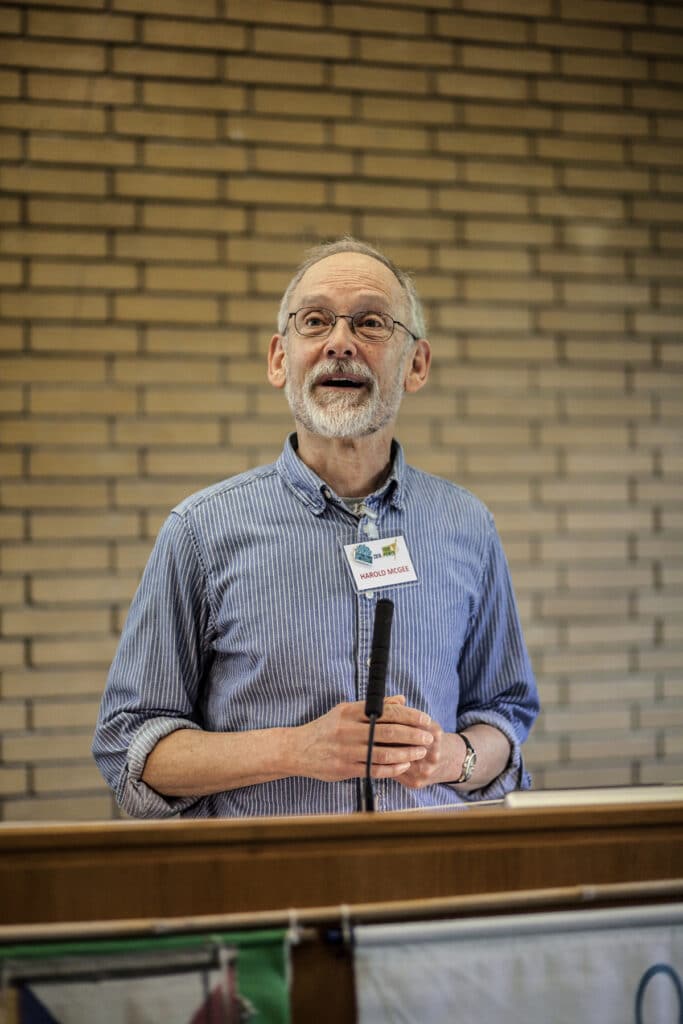
The second edition of On Food and Cooking, published 20 years later, is markedly different. Why is that?
The first edition came out in 1984 and it really was written just for enthusiasts. Then, after a decade or so of it being on the market, it was clear it was being used in culinary schools, because nothing quite like it existed – there were plenty of textbooks on food science for food scientists, but nothing for cooks. When I saw that, I began to think about the second edition in a much more formal and structured way: what is it that a professional in the kitchen should know about his or her materials and methods? And so the second edition came out very differently.
Had the appetite for this sort of book changed?
It was received completely differently. In the late seventies, early eighties, when I was writing On Food and Cooking the first time around, food was not a ‘thing’ in the States. There were no specialty coffee shops, olive oil was unknown in the American kitchen. We had our barbecue and wonderful American traditions and people enjoyed eating food, but it was not a very outward-looking approach. Then, somehow or other – I think it was a mixture of getting far enough away from the end of the second world war and, certainly in England, the end of rationing, as well as the arrival of jet aeroplanes, travel, tourism and television – all these things combined to make people see that food was way more interesting than they’d realised. Young Americans became interested in having restaurants. But they were not content to do a 10-year apprenticeship, starting with prepping potatoes. In the 1990s, I started to hear from young American cooks who had ambitions and would ask difficult questions of the mainly European-trained chefs, who would tell them, “Don’t ask questions, just do it,” or would make things up for the sake of coming up with an answer. So these young chefs would write to me with their questions. They were really the ones – these young, ambitious, impatient American chefs – who helped give my book some visibility.
You developed relationships with some very high-profile chefs. How did that come about?
Heston Blumenthal read the book and his mind was blown by the fact that classic French techniques such as ‘sealing in the juices’ of meat, for example, were not grounded in truth. The first contact I had from him was a long email about cooking beans. He had tried something 10 different ways but was uncertain about the results. It was clear from that initial email that his mind was firing on all cylinders, all the time.
There are two ways to get to a very high level of proficiency in cooking. One is just doing it a zillion times and in the course of doing that, you get so much practical experience. You do it a little bit differently each time, get a different result, and register what changed. You begin to understand things, but on a very different level to if you understand what something is made from and why it behaves a certain way in a particular circumstance. Once you have that understanding, you can then predict how an ingredient might behave if you treat it in a way you haven’t tried before, which might give you an interesting result.
This scientific approach to cooking was, as a movement, labelled ‘molecular gastronomy’. You have publicly taken umbrage with that label. What is it that you believe is misleading?
Cooks have always embraced many different approaches depending on the materials and resources available to them and what they were trying to do: feed people, impress people, amuse people. There have always been those elements, cross-culturally. While I was writing these books, there was this avant-garde movement in Spain which all of a sudden, in the space of a decade, burst into prominence on the international scene. The leader of that, Ferran Adrià, would come up with new menus constantly, always innovating, never wanting to repeat himself. A lot of his dishes at that time looked like science experiments and he talked openly about the use of food science. He was using ingredients and tools that had previously been used in industry but would have been heretical in a high-end kitchen. Food science of a certain kind, in the service of innovation, became important in the restaurant.
But to do that well, you really have to understand things in tremendous detail. The thing that Heston, Ferran, Thomas Keller and I were concerned about – and were compelled to make a public statement about – was that while young chefs should learn about the science of cooking, they also need to learn to cook. The term ‘molecular gastronomy’ became associated with an experimental approach to cooking, but missed the point that good cooking in restaurants requires a depth of practical knowledge and know-how. That foundation is really important, because if you only focus on novelty – which became the exciting, cool thing to do – and you don’t have that foundation, you’re going to make a lot of novelties that are horrific and give the whole field a bad name. That sort of approach doesn’t make a real contribution to the culture of the kitchen.
Industrialisation and globalisation have triggered enormous changes to the way we produce and consume food. What has been the impact of that?
I think what’s happened in food has happened with human culture in general: we’ve been going full steam ahead and not noticing what we’re leaving in our wake. Now, we’re finally waking up to the consequences. For example, we can’t dismiss concerns about the influence of animal agriculture on the climate by saying people are just trying to scare us. This is a real issue and one that needs to be addressed.
The founder of Impossible Foods, which makes plant-based meat substitutes, said that his mission is to put animal agriculture out of business totally. But I love meat and I respect the farmers in Scotland and France and many other places where animal agriculture has been an integral part of human culture, forever, so when I hear him say that, it bothers me. It seems to be so cold and unwilling to confront historical reality. On the other hand, I think what he’s doing is great because it gives us one more option to deal with a huge problem. We’re going to need dozens of approaches to begin to address these issues. It’s important that smart people, whether they work in Silicon Valley or anywhere else, are thinking about it and doing what they can. People should start out by recognising that they don’t have The Answer – capital T, capital A – and that the more people who are seriously engaged with the issue, the better.
Do you think the way that we now produce food has had an impact on food quality as well as the environment?
I think it’s difficult to generalise, because the effects are different on different things in different places. Rachel Laudan is a historian who happens to write about food. She wrote a book called Cuisine and Empire and she’s the closest thing we have to a voice of reason on these issues. Her book is about the history of cooking, from the earliest days to now, and the point she makes is that before industrialisation, food production meant a terrifically hard life for anyone involved. I think she makes a very compelling case that the industrialisation of food has been a boon for people who have lived in the last century or two, for that very reason – that it frees them from spending hours a day over a grindstone making flour. It’s very easy to say that the quality of food has declined, that the variety that we can enjoy has declined and that there are all these negatives, but there’s a huge counterargument about the quality of life, which has improved.
What will the future of food look like?
I’m not a prophet, so I really don’t know – except to say that it’s probably going to become yet more diverse and yet more self-conscious, and those are mostly good things. What strikes me is the fact that there are now dozens of people who were previously never involved in food who are looking at these problems and seeing what they can do to make a difference. They’re applying their skills to food, which I think is unprecedented. And that’s exciting.
